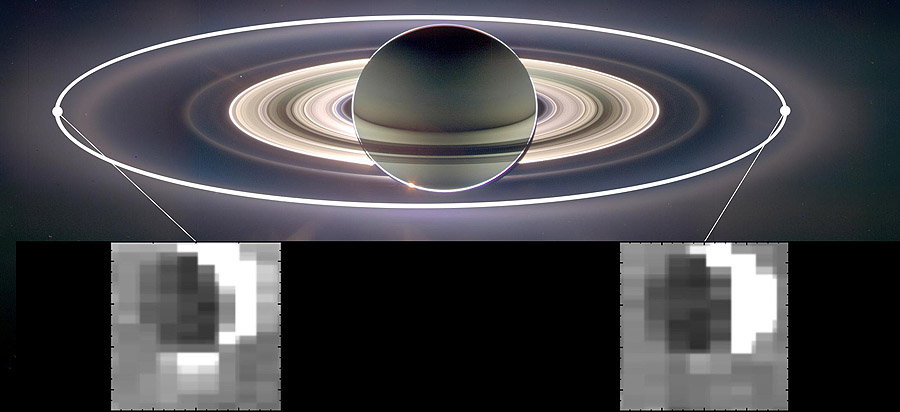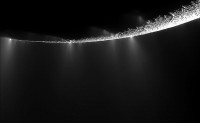This set of images from NASA’s Cassini mission shows how the gravitational pull of Saturn affects the amount of spray coming from jets at the active moon Enceladus. Enceladus has the most spray when it is farthest away from Saturn in its orbit (inset image on the left) and the least spray when it is closest to Saturn (inset image on the right). (Image Credit: NASA/JPL-Caltech/University of Arizona/Cornell/SSI)
Home This set of images from NASA’s Cassini mission shows how the gravitational pull of Saturn affects the amount of spray coming from jets at the active moon Enceladus. Enceladus has the most spray when it is farthest away from Saturn in its orbit (inset image on the left) and the least spray when it is closest to Saturn (inset image on the right). (Image Credit: NASA/JPL-Caltech/University of Arizona/Cornell/SSI) This set of images from NASA's Cassini mission shows how the gravitational pull of Saturn affects the amount of spray coming from jets at the active moon Enceladus. Enceladus has the most spray when it is farthest away from Saturn in its orbit (inset image on the left) and the least spray when it is closest to Saturn (inset image on the right). (Image Credit: NASA/JPL-Caltech/University of Arizona/Cornell/SSI)
This set of images from NASA’s Cassini mission shows how the gravitational pull of Saturn affects the amount of spray coming from jets at the active moon Enceladus. Enceladus has the most spray when it is farthest away from Saturn in its orbit (inset image on the left) and the least spray when it is closest to Saturn (inset image on the right). (Image Credit: NASA/JPL-Caltech/University of Arizona/Cornell/SSI)



